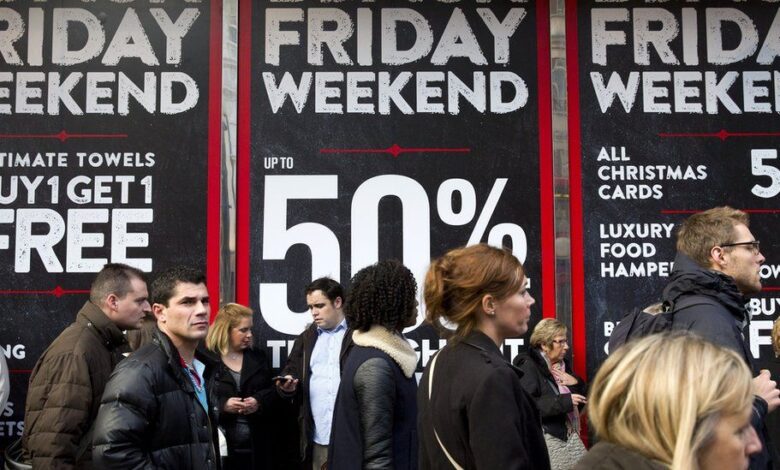What is Black Friday? The biggest sales day of the year
Black Friday retains an air of mystery, with a few lesser-known facts surrounding the annual retail phenomenon.

Black Friday, observed on November 24 this year, signifies the commencement of the Christmas shopping season in the United States. On this day, numerous stores offer substantial discounts and promotions, making it one of the busiest shopping days annually. Aligned with the tradition, Black Friday follows Thanksgiving, a day for expressing gratitude through a festive meal featuring roast turkey and other culinary delights.
Originally, the term ‘Black Friday’ denoted the moment when retailers transitioned from operating at a loss (in the red) to turning a profit (in the black). Over time, this day has evolved into a massive shopping extravaganza marked by large crowds, extended store hours, and extensive promotions, both in physical stores and online.
Despite its prominence, Black Friday retains an air of mystery, with a few lesser-known facts surrounding the annual retail phenomenon. Let’s uncover some of these intriguing details about the day:
Origin of Black Friday
As per Fox News, the inaugural use of the term “Black Friday” at a national level occurred in September 1869, and interestingly, it wasn’t associated with holiday shopping. According to the Encyclopedia Britannica, the term was employed to characterize American Wall Street financiers Jay Gould and Jim Fisk. These financiers acquired a substantial portion of the nation’s gold with the intention of inflating its price.
Another intriguing tale dates back to the early 1960s when Philadelphia police officers coined “Black Friday” to describe the chaos caused by suburban visitors flocking to the city for holiday shopping. The resulting crowds created challenges for law enforcement, leading to longer work shifts to manage traffic accidents and shoplifting. Despite retailers attempting to spin the name positively as “Big Friday,” the phrase “Black Friday” stuck in the local community. Only in the late 1980s did merchants begin to popularize the red-to-black narrative for Black Friday, as reported by Britannica. The day’s history, spanning from financial schemes to urban chaos, adds layers to the annual retail phenomenon.
Global Phenomenon
Black Friday is not exclusive to the United States; it’s a global phenomenon! According to a report from a digital analytics and SEO marketing firm, Fox News reveals that more than 10 countries actively participate in the annual holiday shopping event. These countries include Canada, the UK, South Africa, Ireland, Germany, Italy, Sweden, Belgium, Luxembourg, the Netherlands, Brazil, Mexico, Australia, and New Zealand. It’s a testament to the widespread appeal and influence of Black Friday, turning it into a truly international shopping extravaganza.
For over six decades, Black Friday has stood as one of the most bustling days for both retail stores and holiday shoppers. However, in recent years, the event has expanded its scope, with the introduction of early or extended Black Friday sales. This evolution has been accompanied by the emergence of Cyber Monday and Cyber Week events, providing shoppers with the opportunity to make holiday purchases exclusively online. The landscape of holiday shopping has thus transformed, offering a more extended and diverse shopping experience beyond the traditional Black Friday rush.
Black Friday Sale
Retailers strategically provide significant discounts during Black-Friday to entice customers and kickstart early holiday shopping, with the ultimate goal of boosting overall sales. This day serves as a prime opportunity for retailers to clear out older or excess inventory by offering attractive discounts, creating space for new merchandise. It’s a win-win situation – customers get access to great deals, and retailers can optimize their inventory, ensuring a fresh and appealing selection for the holiday season.
The landscape of Black Friday has evolved into a highly competitive market, with numerous retailers vying to outdo each other with better deals and offers. This intense competition has turned Black-Friday sales into a significant event that generates substantial publicity and media coverage. The allure of attractive deals helps retailers not only boost sales but also create widespread awareness of their brand, drawing in more customers eager to take advantage of the enticing offers. It’s a dynamic and competitive retail environment that adds an extra layer of excitement to the traditional holiday shopping experience.
On Black Friday, stores typically open their doors early in the morning, anticipating the later rush of eager shoppers. Meanwhile, customers often go to great lengths to secure the best deals, arriving at the stores as early as possible. In some cases, enthusiasts even go to the extent of camping outside malls overnight, driven by the excitement of seizing exciting deals and saving money on their Christmas shopping. This early bird tradition has become synonymous with the Black Friday experience, adding a sense of anticipation and enthusiasm to the start of the holiday shopping season.
You might also be intersted in – 120 million trees are cut down every Christmas across the world, leading to large scale deforestation and CO2 release



